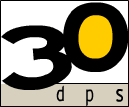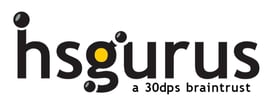UI/UX Engineering
& Conversion
Optimization
“Design is not just what it looks like and feels like. Design is how it works.”
Steve Jobs
Apple Inc.
No matter how elegant a design is, if it doesn't convert it's a bad design.
But a great user experience will inherently convert.
Do you know how visitors are actually interacting with your website? You can!
UI/UX Engineering: Designing with Purpose
Understanding this crucial fact is essential: EVERY CLICK ON YOUR WEBSITE CONSTITUTES SOMEONE LOOKING FOR THE ANSWER TO A QUESTION. Therefore, when designing your website, it is important to ask ourselves, "What questions do our visitors have when they search for answers?" The goal should be to create a website that effortlessly and efficiently provides these answers. The easier it is for your visitors to find the information they need, the more likely they are to engage and make a purchase.
While user interface (UI) design is certainly important, it is NOT the most important part of the user experience (UX). Content, on the other hand, IS! It is the backbone of every successful website. Unfortunately, many agencies fail to recognize this and neglect to allocate enough time, attention, and budget to understand the needs of your target audience and develop a solid content strategy and persuasive architecture.
Investing in conversion optimization is an investment in the long-term success of your business. Unlike other marketing strategies, conversion optimization continues to deliver results over time. It is a process that requires ongoing analysis, implementation, and refinement to ensure that your website is always performing at its best.
With our expertise in UI/UX engineering and conversion optimization, we can help you create a website that not only captivates your audience but also drives measurable results. Let us take your online presence to the next level and help you achieve your business goals.
Certainly design norms evolve, and user expectations change, so it is indeed important to stay up on the latest in user interface design. But trendy design does not at all necessarily translate to a good user experience, so the amount of experience you website designer has in producing a good user experience the more likely you are to end up with a great website. Our HubSpot Gurus have decades of experience developing custom website designs. We don't just depend upon using the same templates and themes that everyone else has... in large part because those templates are intended to cover a broad based of business types, rather than being designed for YOUR business and your customers' needs.
Conversion Optimization: Goal-Oriented Design
Is your website converting at a rate of 30-40%? Not every industry can achieve that level of success, but some of our customers have. But it doesn't happen by accident, and it doesn't happen because you have a cool looking website. High conversion rates are a result of three things.
- A commitment to providing your website visitors with valuable information (for free, typically), and reducing the friction that often hinders them from getting what they want and need.
- A conscious effort to create a persuasive architecture, that thoughtfully leads visitors down a path to conversion.
- A willingness to repeatedly iterate, try new things, and take educated risks by utilizing data acquired from actual interaction with your website.
In order to attain top-end conversion rates, you must be willing to invest in conversion optimization. The good news is that there are few expenditures that bear fruit as plentifully as does conversion optimization. Unlike, say, Google advertising, conversion optimization is the gift that keeps on giving. We use a process called Growth-Driven Design, through which we use information acquired through end users actual interaction with your website to build hypotheses on what kinds of changes would accomplish the goal of being most beneficial to your customer and therefore lead to the most conversions. We then weigh the cost-benefit of each of these hypotheses, and implement the most promising. We then measure the results, positive or negative (we may actually undo a change if it increase friction), and do the process again, constantly improving the conversion rate.

